A look at high end multimeters
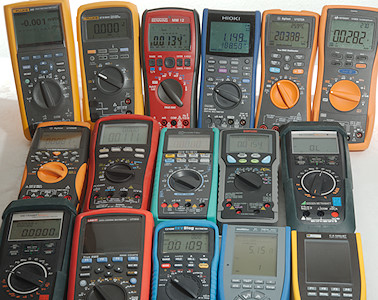
I have a couple of high end multimeters and in this article I try to show the difference between them. The more advanced of these meter cost about the same as a bench meter. When a brand has a series of meters I have only include the top model.
This is not a review of the meters in any way, for a few of the meters I have done a review here: Multimeter reviews on Lygte-info
Contents
What is a high end multimeter meter
Description of the meters
Benning MM12
Brymen 869s
Chauvin Arnoux CA 5293
EEVBlog 121GW
Fluke 87V Max
Fluke 289
Gossen MetraWatt MetraHit Energy
Gossen MetraWatt MetraHit PM Prime
Hioki DT4282
Keysight U1252B
Keysight U1272A
Keysight U1282A
Kyoritsu KEW1062
Metrix MTX3291
Sanwa PC7000
UNI-T UT181A
Comparing specifications
Functions
Specifications
Physical
What is a high end multimeter meter
It may be a good idea to define what I mean by a high end multimeter. It is the most advanced meters from a manufacturer, but I have excluded meters with some extra functions:
- Multimeter with thermal imaging. These meter has a graphic display and can show a image of hot spots.
- Multimeter with insulation resistance measurement. These meter can measure Gigaohm with 500 to 1000V.
- Multimeter with process calibrator. These meter can supply precise current, voltage and sometimes resistance in a range that is very useful to test/calibrate industrial sensor inputs.
- Multimeter with very low ohm ranges. Using 4-terminal connection it is possible to measure way below 1 ohm with precision (Gossen has one called 27M).
These extra functions can easily double the price of the meter, making it more expensive than a normal high end multimeter and the meter may be without all the standard multimeter functions.
The meters I have included in this article is mostly with at least 30000 count display and all the common measurements (volt, current, ohm, continuity, diode, temperature, frequency, capacitance) with min/max/peak, they also include a computer connection and for many meters logging. Some meter includes more than that.
In this article I frequently say exotic functions, by that I mean functions that are not covered by the above list, it can a high voltage diode test, a crest factor readout, a pulse counter or a lot of other stuff.
Description of the meters
For each meter I show the segment layout, mostly with photos, but in a few cases I have used screen dumps or graphic from the manual. I believe it is very interesting to see what the display can do, but be aware that the meter may not support everything on the display. If you like bargraph notice that some meter have it at the bottom where it may be hard to see from some angles and other have moved it higher up the display.
Click on the photo of the meter to get a larger version.
Benning MM12
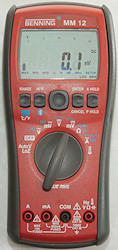
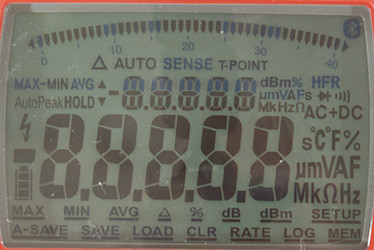
A fairly standard meter, but it is missing the uA range in current. The meter is a 4000/40000 count meter, this is adjusted in the "setup". When you buy the meter the package is very complete, it includes alligator clips, magnetic hanger, pouch, calibration data, computer interface and logging software, in addition to the standard contents.
The selection of function is a bit different on this meter: a lot of functions are listed at the bottom of the display, they can be selected with the arrow keys and activated with the enter key.
Brymen 869s

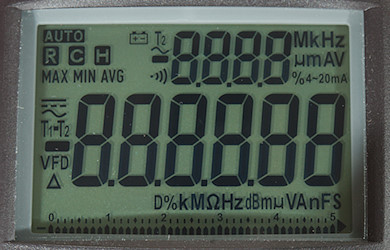
A fairly standard meter with all the expected ranges and function for a high end meter and not much else. For VDC the resolution can be increased to 500000, i.e. one digit extra. It can use two thermocouples at a time, this means directly measure a temperature difference between two locations.
The meter is fairly easy to use and has a easy readable display, but 5 voltage selections on the rotary switch may be a bit much (It is not the only meter with that).
Also sold as Greenlee DM-860A, Elma BM869s
Chauvin Arnoux CA 5293
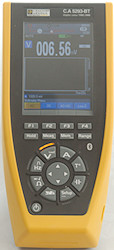


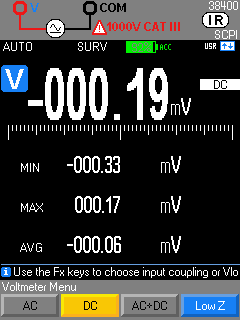
This meter has a huge graphical display and uses buttons to select range, the meter can show curves of the measured values. The meter is easy to use, everything is clearly shown on the display, but some settings requires a couple of button presses. It is possible to display tolerances on measurements. This meter is the most advanced handheld meter I have ever seen and also the easiest to use for all the exotic functions.
The meter has a low ohm range and a high voltage diode range, for temperature it can both use thermocouplers and RTD.
Using the logging function is very easy on this meter, just press the "Mem" button and the meter is logging, press again to save or cancel.
The color display is easy to read, except in direct sunshine, but it also means this meter has a very short battery lifetime, it is supplied with NiMH batteries and can be charged from USB while used, it can also be run on Alkaline AA batteries in a emergency.
This meter exist in a "-BT" version that has a build in Bluetooth interface, everything else is the same.
Also sold as Metrix MTX 3293B
EEVBlog 121GW

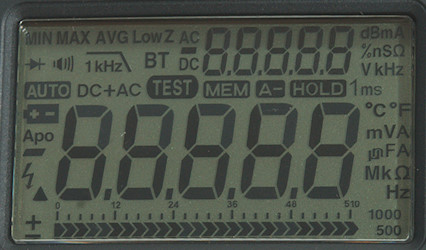
This meter was designed with a lot of input from EEVBlog, due to this it has some significant difference from most other multimeters: The burden voltage in current is lower and it has 7 current ranges (Most meters has 6), there is also a high voltage diode range and VA.
The lower burden voltage also means that it may be necessary to use relative measurement in some ranges.
This meter can log to Bluetooth or a SD card inside the meter (The meter must be opened to get the card and data). The SD card can also be used to upgrade the meter software.
Fluke 87V Max
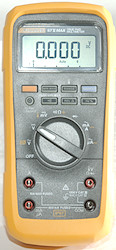
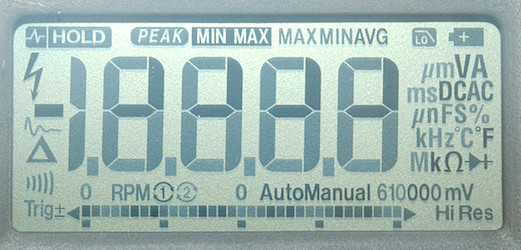
This meter is not really a high end meter (Except in price), it is missing computer interface and has a bit low resolution. It is a very competent meter and very robust meter and when comparing specifications it is not far behind the high-end meters, the difference is more in functions (No logging and exotic functions).
Fluke 289
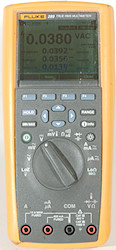
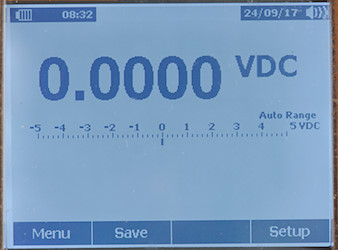
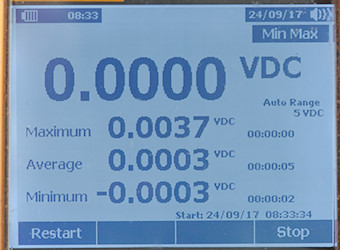
This is Flukes high end meter, it can measure a lot of parameters with high precision. This includes pulse width for high or low pulses and crest factor for AC. There is also a low ohm range with higher test current.
The meter is very slow to turn on, display has a fairly bad contrast and the user interface is not as easy as other Fluke meters, but everything can be found without a manual.
Fluke has documented how to read measurements from the meter, but not how to download logs.
The computer interface is extra and includes Flukes logging and report software in a limited version.
Gossen MetraWatt MetraHit Energy
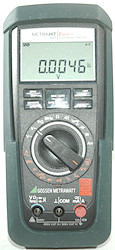
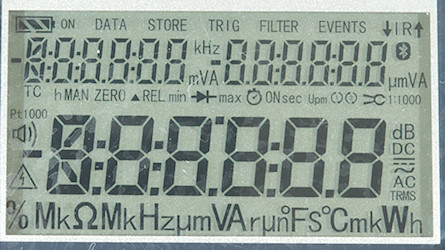
This is a rather expensive meter, that can measure a lot of stuff, including power and analyze the quality of mains voltage.
The nS range on this meter is 1/ohm and not a real nS range, i.e. it cannot handle higher resistance than ohm.
The user interface is not that easy when looking for the more exotic functions, there it may be necessary with a manual.
The computer interface is extra and cost the same as a decent multimeter, it do not include software and the protocol is not published.
Gossen MetraWatt MetraHit PM Prime
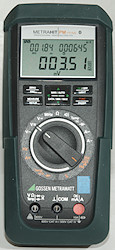
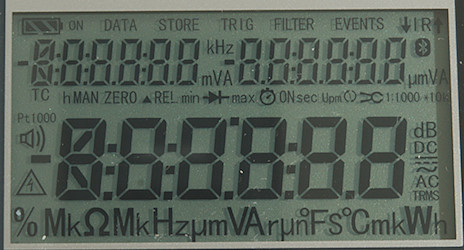
This meter has a very high resolution, but precision is not better than other precise high end meters and it is not as packed with functions as the Energy meter.
The computer interface is extra and cost the same as a decent multimeter, it do not include software and the protocol is not published.
Hioki DT4282

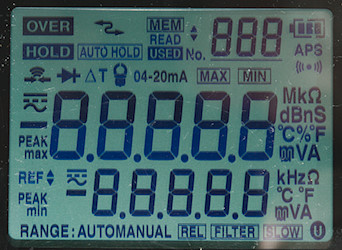
This meter do not have many exotic functions/measurements, but as a nice detail min/max is always active and can be viewed and/or cleared at any time.
It has a slow readout that can stabilize some varying measurements down to about 1Hz.
Keysight U1252B
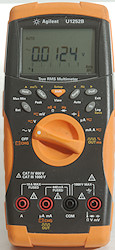

This meter has a charge circuit for a NiMH battery build-in, to use it the meter must be off and some DC voltage must be connected to the input terminals (It is marked). I got a rather large power supply/charger with the meter. it is not required to use rechargeable batteries, the meter works fine with alkaline.
Dual display is not automatic (Always default to temperature), but must be selected.
Keysight has documented how to read measurements from the meter, but not how to download logs.
The user interface on Keysight meters are not completely obvious, but when you have learned one it is not hard to use another meter (The are not exactly the same, but there are many similarities).
Keysight U1272A
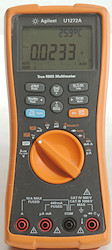
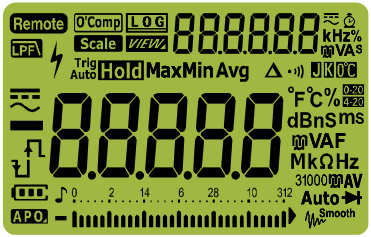
Keysight has documented how to read measurements from the meter, but not how to download logs.
Dual display is not automatic (Always default to temperature), but must be selected.
The user interface on Keysight meters are not completely obvious, but when you have learned one it is not hard to use another meter (The are not exactly the same, but there are many similarities).
Keysight U1282A
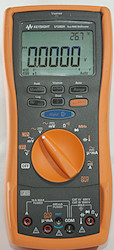
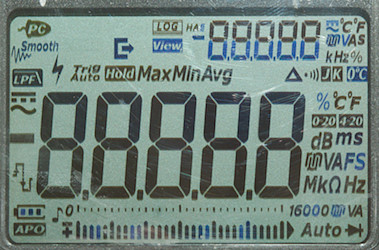
The meter has a RMT input, it can be used to control one button (Defined in setup), most obvious choice is the Hold button. The meter has 4 log domains, this means there data is stored in four different logs, depending on how the storing is requested.
Dual display is not automatic, but the measurement must be selected by one or more long presses on the "Dual" button.
When changing range this meter is very slow, auto range can also be a slightly slow.
Keysight has documented how to read measurements from the meter, but not how to download logs.
The user interface on Keysight meters are not completely obvious, but when you have learned one it is not hard to use another meter (The are not exactly the same, but there are many similarities).
Due to the IP rating, the enclosure is well sealed, this makes it a bit more cumbersome to replace batteries than in most other meters.
Kyoritsu KEW1062
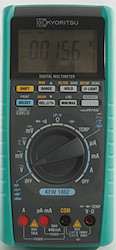
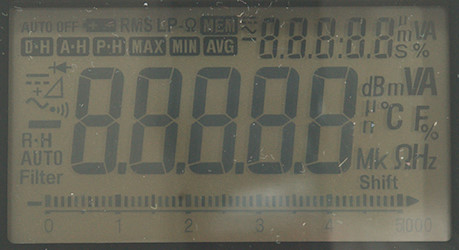
Standard high end meter with a few extra functions: Can do either RMS or Mean for AC and has a low power ohm measurement with lower voltage.
The contrast is a bit low on the display.
Very similar YOKOGAWA TY720
Metrix MTX3291
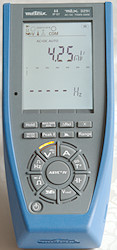
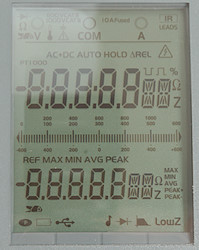
This meter looks similar to CA 5293, this is because Metrix is part of Chauvin Arnoux. The meter uses a LCD screen instead of a graphical display, this brings the battery lifetime on line with the other high end meters. The meter do not have many exotic functions, but the the clamp meter mode makes it is very easy to change between clamps with different mV/A rating.
This meter cannot use a thermocoupler to measure temperature, only RTD sensors. They are more precise, more expensive and much larger.
Due to the IP rating, the enclosure is well sealed, this makes it a bit more cumbersome to replace batteries than in most other meters.
Sanwa PC7000
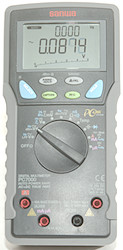
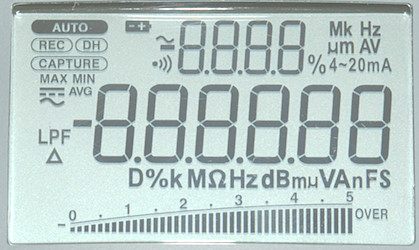
This meter is mostly the same as Brymen BM869s but scaled down with only one temperature input and 20kHz bandwidth. The display and button/rotary switch text are not exactly the same, but all the same functions are present, including the 5 voltage modes.
UNI-T UT181A
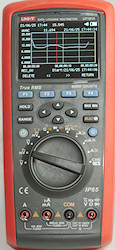

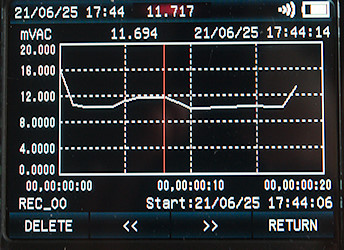
This meter are UNI-T's "copy" of the Fluke 289, it is not exactly the same and has a couple of improvements over the Fluke, especially a much better display.
The meter has a comparator function in all modes, i.e. it is possible to set a low and high limit and then get alarm when inside or outside the limit.
Generally the meter is logical in the user interface and has a lot of possibilities, the display will show multiple values when it gives meaning.
This meter uses a rechargeable LiIon battery (i.e. not a standard battery), that is charged from the input terminals with a special adapter. This means it is not possible to do any measurements while charging. Due to the display the runtime is shorter than most other DMM's.
UNI-T make some meters with a false CAT rating, this is mostly a problem if the meter if bought directly in China.
Comparing specifications
These table are designed to show the differences between the meters, for some meters a few more unique details are listed in the description.
Functions
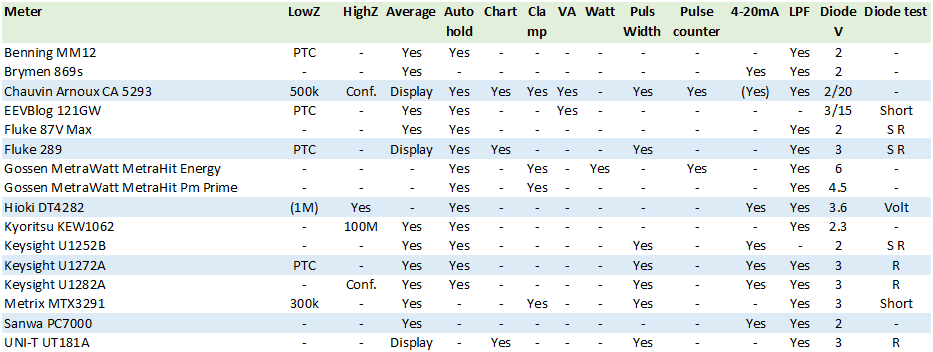
- LowZ: This is used when measuring mains to avoid problem with shadow (capacitive coupled) voltage. The best solution is a PTC, but a resistor can also be used. The Hioki has 1Mohm input impedance in AC, this is close to being a permanent LowZ.
- HighZ: In mVDC range some meters may disconnect (Can be configurable) the standard 10Mohm input resistor and measure with very low load on the circuit.
- Average: When using the min/max function some meters will also calculate a running average, there are a few meters that can display all 3 values simultaneous.
- Auto hold: Wait for stable voltage, then capture it, useful when it is not possible to look at the meter and hold the probes at the same time.
- Chart: Show a chart of the logged data, this requires a graphic display.
- Clamp: Some meter can be configured to show the correct current readout when using a current clamp (i.e. you do not need to translate from 1V to 100A, the meter will show 100A).
- VA: Meter can measure both current and voltage simultaneous and show the product.
- Watt: Meter can measure both current and voltage simultaneous in a way so it can calculate AC power.
- Pulse Width: Width of high/low pulse, this can be calculated from duty cycle and frequency.
- Pulse counter: Count pulses on voltage input.
- 4-20mA: The mA range can be configured to show 0-100% for 4-20mA input, this can be useful for analog industrial sensors.
- LPF: A low pass filter can be applied to AC voltage, this is typically used with variable frequency motor drives.
- Diode V: Diode test voltage, 3V is needed for white leds, higher voltage can be used for leds in series and zener diodes. Sometimes a meter with 2V output has enough voltage to make a white led glow (Except the 87V all 2V rated output could make a 5mm glow).
- Diode test: Some meters use beeps to signal good or shorted diodes. S and R means a short beep for a good Schottky or Regular diode and another audio indication for a shorted diode. Short means audio for shorted and Volt means audio below a specific voltage.
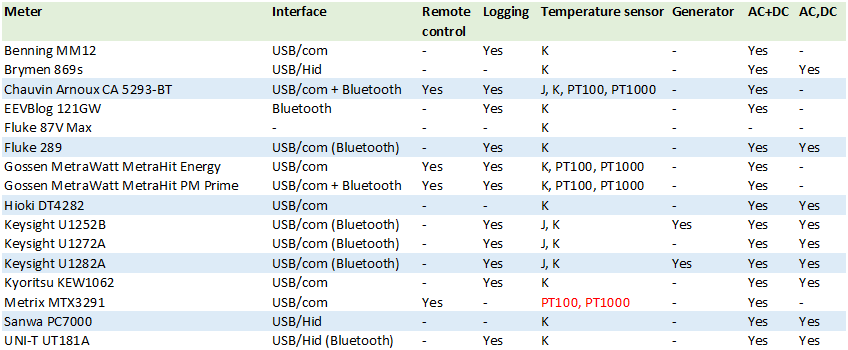
- Interface: How the meter communicate with a computer.
- Remote control: Can the meter be remote controlled, due to the rotary switch it is usually no, but a few meters have relays.
- Logging: Can the meter log data to its own memory, to get these data out may require manufactures meter software.
- Temperature sensor: Usually a meter will work with a thermocouple type K, but some meters can use RTD sensors (PT100/PT1000) for better precision
- Generator: The meter can generate a square wave in the audible range with adjustable frequency and duty cycle.
- AC+DC: Meter can combine AC and DC voltage to a single RMS value, using the formula: sqrt(sqr(AC)+sqr(DC))
- AC,DC: Meter can simultaneous show both AC and DC voltage on a dual display.
Some meters do not have Bluetooth, but an external Bluetooth interface can be bought.
Specifications

- Count: The resolution of the meter, some meters has a high resolution mode that may apply for some or all modes.
- VDCRes: Voltage DC resolution, this is either 1 or 10 microvolt. It may require high-res mode and manual ranging to get there.
- VACRes: Voltage AC resolution, this is either 1 or 10 microvolt. It may require high-res mode and manual ranging to get there.
- ADCRes: Current DC resolution, this is either 1 or 10 nanoampere. It may require high-res mode to get there.
- OhmRes: Ohm resolution, this is either 1 or 10 milliohm. It may require high-res mode or a special low ohm range to get there.
- CRes: Capacitance resolution, this is either 1 or 10 picofarad. It may require high-res mode to get there.
- OhmMax: Maximum readout in ohm mode, to use it the setup must often be away from wires and people, i.e. keep the hands well away from the setup.
- nS: Nanosiemens can usually measure very high resistance and can subtract leak current (Use a wood stick to press the zero button), it is more sensitive to wires and people that high ohm. It may require manual ranging to get there.
- CMax: Maximum capacity readout, it can take a long time (a minute or two) to measure large capacitors and a capacitor with high leakage may prevent the meter from ever finishing.
The full resolution may not be very useful in praxis due to noise and wire resistance/capacitance.
*This meter failed on my 85mF capacitor, but worked with 11mF.

- VDC%: Best tolerance for DC voltage, this is typically in the low volt range (Not mV).
- VAC%: Best tolerance for AC voltage, this is typically in the low volt range (Not mV).
- ADC%: Best tolerance for DC current, this is in the uA or mA range where heat is low.
- 100kHz 1V: A test with 100kHz sinus at 1V rms, this is at the limit of the many of the meters and they have a fairly wide tolerance in the specifications.
- Error: Calculated error for the above, using a 7.5 digit bench meter as reference.
A +10 specification adds minimum 0.02% tolerance to the reading for a 50000 count multimeter.
Note that the "+ digit" specification for Benning MM12 and Fluke 87V Max is slightly misleading, because they have one less digit. I.e. a +2 specification for MM12 or 87V is equivalent to a +20 specifications for the other meters. The PM Prime is a 500000 count meter, i.e. the + specification can be divided by 10 for comparison to the other meters.
Physical

- CAT: Safety rating, "IV 600V" means industrial and distribution up to 600V. "III" is for less demanding applications.
- A Protection: How is the meter protected from measuring voltage with probes in ampere input (In addition to the fuse). "Low level" means a very discrete warning that is easy overlooked.
- IP: Environment rating for dust and water, first digit is particles/dust and last digit water, higher value is better protection.
- Temp: At what temperature can the meter be used, it will loose some precision when moving away from 23°C
- Drop: How large drop the meter is rated to handle, it is specified in meters.
- Battery: What batteries the meter use, when NiMH is listed the meter has a charge circuit for them.
- Weight: Weight of meter with batteries and any rubber sleeve.
- Size: Dimensions of meter.
Conclusion
I will not specify a best meter, that depends on what is needed. For me the CA5293 is the favorite on my test bench, but due to the issues I may sometimes grab another meter. If I need to measure power there is only one option: the Energy. For general usage the Brymen 869s is a nice meter, but so are a lot of the others. For current measurement I like meters with one current input and automatic switching between uA, mA and A, this usually prevents blown fuses (CA5293, Gossen, MTX3291) and means lower burden voltage in mA range.
But there is also reasons to avoid some meters:
Chauvin Arnoux CA5293: Short battery life and hard to read in bright sunlight.
Keysight U1282A: Very slow when changing mode. I nearly never uses this meter, except for logging (Battery change could be easier, but they last a long time).
Fluke 289: Low contrast and slow startup.
UNI-T UT181A: Proprietary battery and cannot be used while battery is charging.
Notes & links
Many meters are supported in TestController for logging and a few also support download of log data. Check TC supported handheld multimeters for specific meters.
Frequency curves from 50 to 500kHz of some multimeters: Frequency response of multimeters
My reviews: Multimeter reviews includes a few of the meters.
This article got delay about two months due the German internet shop Conrad that says stuff is in stock, when it is not. When asked about delivery date they just throw out a date about one week in the future (I got that twice). In the end I canceled my order and bought in another shop that delivered in a few days.









































